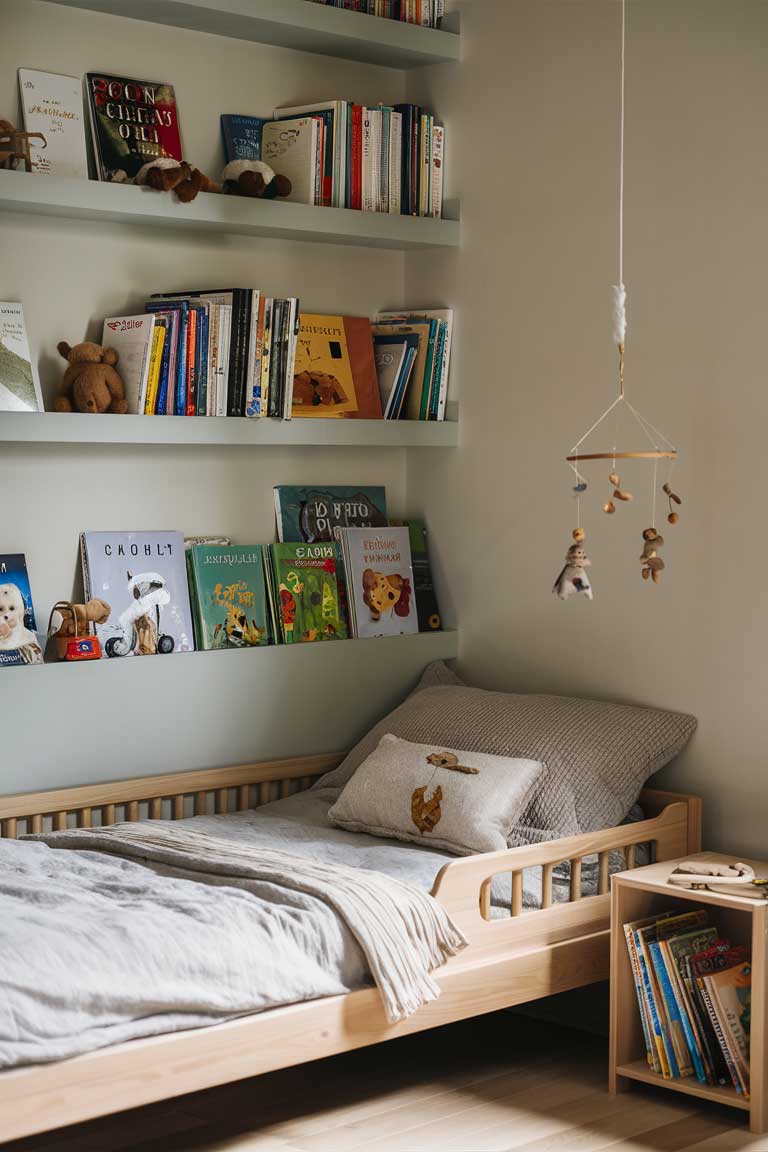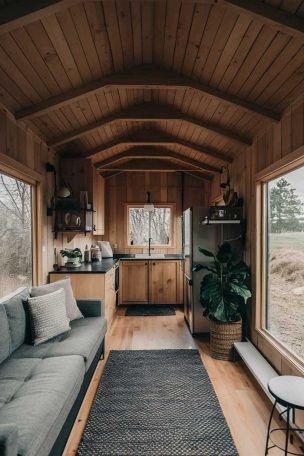Ah, the joyful chaos of family life! Toys strewn across the living room, a never-ending pile of laundry, and the constant battle against clutter. Sound familiar? If you’re nodding your head, you’re not alone. Many parents find themselves overwhelmed by the sheer amount of stuff that comes with raising children. But what if there was a way to simplify, to focus on what truly matters, and to create a more intentional family life? Enter minimalism with kids – a concept that might seem like an oxymoron at first glance, but one that can transform your family dynamics in the most beautiful ways.
In this comprehensive guide, we’ll explore how to embrace minimalism in a family setting, addressing everything from the initial transition to maintaining a minimalist lifestyle as your children grow. We’ll dive into practical strategies, tackle common challenges, and discover how this approach can benefit not just your living space but your family’s overall well-being. So, let’s embark on this journey together and uncover the art of living more with less, even with little ones in tow.
Understanding Minimalism with Children
Defining Minimalism in a Family Context
When you hear the word “minimalism,” what comes to mind? Stark white rooms with a single chair? Living out of a backpack? While these extreme versions might work for some, family minimalism is a whole different ball game. It’s not about depriving your children or living an austere life. Instead, it’s about making intentional choices that align with your family’s values and priorities.
Family minimalism is flexible and unique to each household. There’s no “one size fits all” approach here. For some, it might mean drastically reducing possessions, while for others, it could be more about simplifying schedules and commitments. The key is to focus on what matters most to your family and let go of the rest.
Think of it as curating your family life. Just as a museum curator carefully selects pieces for an exhibit, you’re choosing what deserves space in your home and life. This process helps create an environment where both parents and children can thrive without the constant noise of excess.
Benefits of Minimalist Parenting
Now, you might be wondering, “Is all this effort really worth it?” Let me tell you, the benefits of minimalist parenting are pretty amazing:
- Less multitasking, more presence: When you’re not constantly managing stuff or overscheduled calendars, you can be more present with your kids. Imagine having the mental space to truly engage in that tea party or Lego building session!
- Improved mental health: A clutter-free environment can significantly reduce stress and anxiety for the whole family. It’s like giving your mind room to breathe.
- Financial stability: By focusing on needs rather than wants, you’ll likely find your spending habits changing. This can lead to improved finances and the ability to invest in experiences that really matter.
- Fewer distractions: With less stuff competing for attention, children (and adults!) often find it easier to focus and engage in meaningful play or work.
- Modeling important values: By practicing minimalism, you’re teaching your kids valuable lessons about contentment, intentionality, and the true sources of happiness.
- Quality over quantity: With fewer toys and activities, you create space for deeper engagement and creativity. You might be surprised at how imaginative kids can be with simple objects!
- More time for what matters: Perhaps the biggest benefit of all – minimalism frees up time and energy for the things that truly bring joy to your family, whether that’s outdoor adventures, creative projects, or simply cuddling up for a movie night.
By embracing these benefits, you’re not just decluttering your home; you’re paving the way for a more intentional, connected family life. And let’s be honest, who couldn’t use a little more of that?
Transitioning to a Minimalist Family Lifestyle
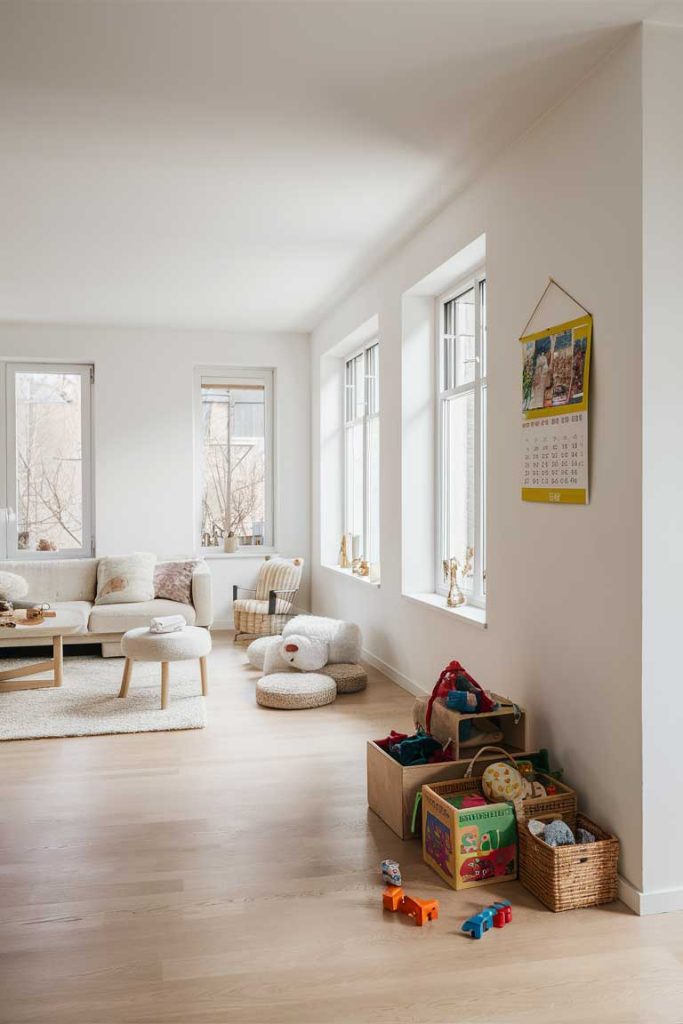
Starting the Journey
Alright, you’re convinced that minimalism could be great for your family. But where on earth do you start? Don’t worry, I’ve got you covered. The key is to take it step by step and remember that this is a journey, not a race.
First things first, start with your own stuff. Yep, that’s right – before you even think about tackling your kids’ mountain of toys, take a look at your own possessions. This serves two purposes: it helps you get into the minimalist mindset, and it sets an example for your children. Plus, let’s be honest, it’s a lot easier to part with your own things than to convince a five-year-old that they don’t need 37 stuffed animals.
As you’re going through this process, involve your kids. Explain what you’re doing and why in age-appropriate terms. For younger children, you might say something like, “We’re making space for the things we love most and use every day.” For older kids, you can have more in-depth conversations about consumerism, values, and what truly brings happiness.
Remember, the goal isn’t to create a perfect minimalist home overnight. It’s about starting a conversation and a process that will evolve with your family over time.
Decluttering Strategies
Now, let’s talk about the nitty-gritty of decluttering with kids. Here are some strategies that can make the process smoother:
- Remove outgrown items first: Start with the easy wins – clothes that no longer fit, toys that are clearly too young for your kids. This helps build momentum without causing too much stress.
- Implement a toy rotation system: Instead of having all toys available all the time, create a system where you rotate toys in and out of storage. This keeps things fresh and exciting for kids while reducing overall clutter.
- Make it a game: Turn decluttering into a fun activity. You could have a “keep, donate, toss” race or challenge kids to fill a donation box with toys they no longer play with.
- Use the “one in, one out” rule: For every new item that comes into the house, an old one has to go. This helps maintain the decluttered state and teaches kids about making thoughtful choices.
- Create designated spaces: Give everything a home. This not only makes tidying up easier but also naturally limits how much you can keep in each category.
Remember, the goal isn’t to get rid of everything. It’s about creating a space that reflects your family’s values and supports your lifestyle. If your kid adores their massive Lego collection and it brings them joy and creativity, by all means, keep it! The key is to be intentional about what stays and what goes.
Mindful Consumption
Once you’ve decluttered, the next challenge is to avoid falling back into old habits. This is where mindful consumption comes in. It’s about shifting from a “want” mindset to a “need” mindset. Here are some strategies:
- Question before purchasing: Before buying something new, ask yourself (and encourage your kids to ask): Do we need this? Will it add value to our lives? Where will we keep it?
- Focus on experiences over things: Instead of material gifts, consider giving experiences. A trip to the zoo, a cooking class, or tickets to a show can create lasting memories without adding to physical clutter.
- Implement a waiting period: For non-essential purchases, try implementing a 24-hour (or longer) waiting period. This helps avoid impulse buys and ensures that you really want or need the item.
- Communicate with family about gifts: This can be tricky, but it’s important. Let grandparents, aunts, uncles, and friends know about your minimalist goals. Suggest experience gifts or contributions to specific goals (like a big kid bed or a family vacation fund) instead of toys.
- Teach kids about marketing: Help older children understand how advertising works. This can be a fun way to develop critical thinking skills and reduce the “I want that!” syndrome.
By focusing on mindful consumption, you’re not just keeping your home clutter-free – you’re teaching your kids valuable lessons about money, decision-making, and what truly brings happiness. And that’s a gift that will serve them well long into adulthood.
Overcoming Common Challenges
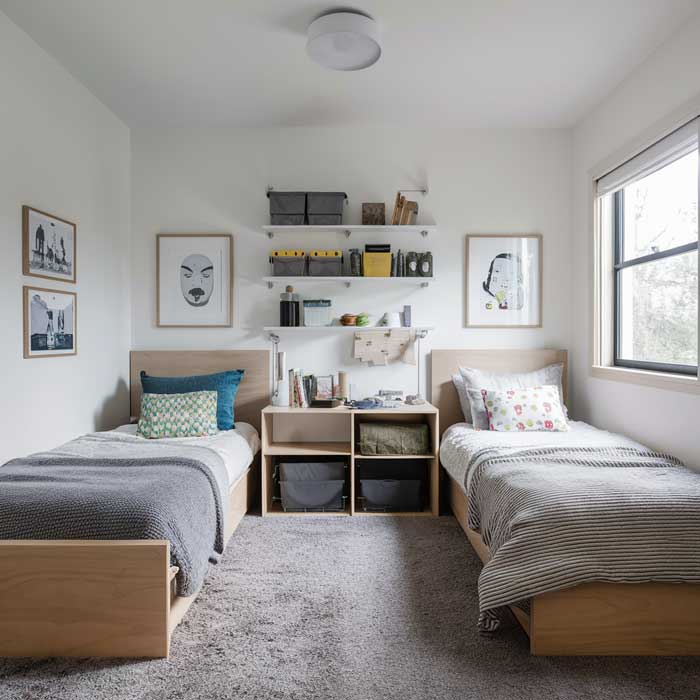
Family Disagreements
Let’s face it – not everyone in your family is going to jump on the minimalist bandwagon with equal enthusiasm. You might find yourself facing resistance, disagreements, or downright rebellion. Don’t worry, this is normal! Here’s how to navigate these choppy waters:
- Open communication: Start by having an open, honest conversation about why minimalism is important to you. Listen to your family members’ concerns and fears. Maybe your partner is worried about losing sentimental items, or your kids are afraid of having to give up their favorite toys.
- Find common ground: Look for areas where everyone agrees. Maybe you all want a less stressful morning routine or more family time. Use these shared goals as a starting point.
- Compromise: Minimalism isn’t one-size-fits-all. Be willing to compromise. If your teenager isn’t ready to pare down their book collection, that’s okay. Focus on areas where you can agree.
- Lead by example: Sometimes, the best way to convince others is to show them the benefits. Start with your own belongings and spaces. As your family sees the positive changes, they might become more open to the idea.
- Go slow: Remember, this is a marathon, not a sprint. Gradual changes are often more sustainable than drastic ones.
Emotional Attachments
One of the trickiest aspects of minimalism with kids (and adults!) is dealing with emotional attachments to objects. That ratty stuffed animal might look like trash to you, but to your child, it’s a beloved friend. Here’s how to navigate this:
- Acknowledge the attachment: Start by recognizing and respecting the emotional connection. This validates your child’s feelings and makes them more open to discussion.
- Find alternatives: For sentimental items that are rarely used, consider taking a photo or keeping a small part of it. For example, you might frame a piece of a beloved but outgrown baby blanket.
- Create a memory box: Designate a special box for each family member to keep their most treasured items. This gives a physical limit to what can be kept while honoring the emotional importance of certain objects.
- Digital solutions: For artwork and school projects, consider creating digital archives. You can photograph or scan items and create a digital scrapbook, freeing up physical space while preserving memories.
- Rotate sentimental items: If there are many sentimental items, consider rotating them through the display. This allows you to honor these objects without them taking over your space.
Remember, the goal of minimalism isn’t to strip your life of sentiment – it’s to make room for what truly matters. Sometimes, that might mean keeping that threadbare teddy bear, and that’s okay.
Managing Children’s Possessions
Kids and stuff – it seems like a never-ending battle, doesn’t it? Between birthday gifts, school projects, and that inexplicable ability to accumulate random objects, children’s possessions can quickly overtake a home. Here are some strategies to keep things under control:
- Regular decluttering sessions: Make decluttering a regular family activity. You might do a big clean-out seasonally, or implement a monthly “tidy-up day”.
- One in, one out rule: For every new toy or book that comes in, an old one goes out. This helps maintain balance and teaches kids about making choices.
- Toy rotation: Keep a portion of toys in storage and rotate them every few weeks. This keeps playtime fresh and exciting without needing more toys.
- Quality over quantity: When buying new items, focus on versatile, high-quality toys that can grow with your child.
- Encourage non-material gifts: For birthdays and holidays, suggest experience gifts or contributions to a bigger goal (like a special trip or a new bike).
- Involve kids in the process: Let children have a say in what stays and what goes. This teaches decision-making skills and respect for possessions.
- Create easy organization systems: Use clear bins, low shelves, and picture labels to make it easy for kids to keep their own spaces tidy.
Remember, the goal isn’t to deprive your children but to create an environment where they can thrive without being overwhelmed by stuff.
External Pressures
Living a minimalist lifestyle with kids can feel like swimming against the current sometimes. Our consumer-driven society constantly bombards us (and our kids) with messages about needing more stuff to be happy. Here’s how to navigate these external pressures:
- Open discussions about advertising: Help your kids understand how advertising works. Make it a game to spot marketing techniques in commercials or store displays.
- Focus on values: Regularly discuss your family’s values and how they relate to possessions and experiences. This helps kids develop a strong internal compass.
- Find like-minded families: Connect with other families who share similar values. This can provide support and reinforce your choices.
- Teach financial literacy: Help kids understand money, budgeting, and the difference between needs and wants. This knowledge is empowering and helps counter consumerist messages.
- Model contentment: Show your kids that happiness doesn’t come from stuff. Express gratitude for what you have and excitement for non-material aspects of life.
- Prepare for peer pressure: As kids get older, they might face pressure from peers about having the “right” clothes or toys. Role-play these scenarios and discuss how to handle them.
- Celebrate uniqueness: Encourage your kids to embrace their individuality rather than trying to fit in through possessions.
By addressing these external pressures head-on, you’re not just maintaining a minimalist home – you’re equipping your kids with valuable life skills and a strong sense of self.
Minimalist Activities and Experiences for Families
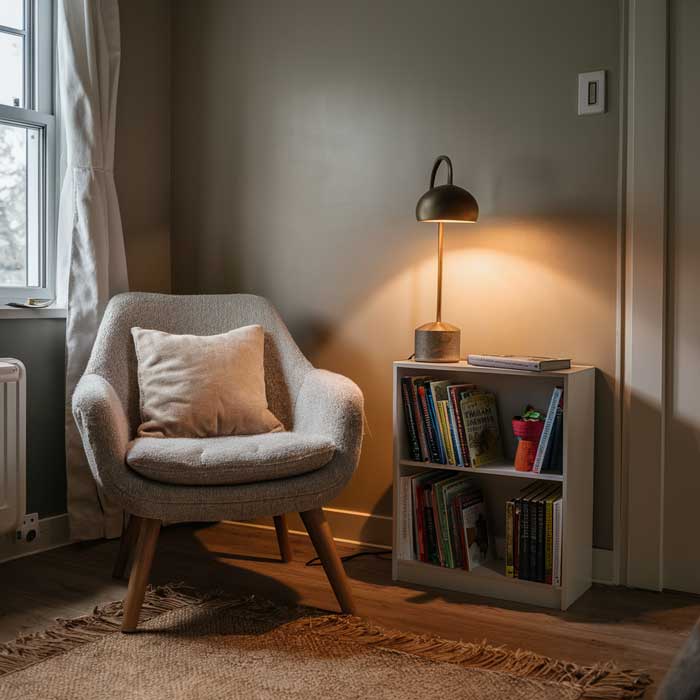
Outdoor Adventures
One of the beautiful things about minimalism is that it often leads families to spend more time outdoors. Nature provides endless opportunities for play, learning, and connection – no fancy equipment is required! Here are some ideas to get you started:
- Park exploration: Turn a simple trip to the park into an adventure. Create a nature scavenger hunt, have a leaf-collecting competition, or see who can spot the most interesting cloud shapes.
- Family gardening: Whether you have a backyard or just a windowsill, gardening is a great minimalist activity. Kids love getting their hands dirty, and there’s something magical about watching seeds grow into plants. Try growing herbs or vegetables – it’s a great way to teach kids about where food comes from.
- Chalk art: A box of chalk can provide hours of entertainment. Have a family art competition on the sidewalk, create a hopscotch course, or draw a giant board game.
- Bubble play: Bubbles are simple, cheap, and endlessly fascinating for kids (and adults!). Try making giant bubbles with a homemade wand, or create a bubble obstacle course.
- Nature walks: Turn a walk into an educational experience. Learn to identify local plants and animals, collect interesting rocks or leaves, or simply enjoy the sights and sounds of nature.
- Stargazing: On a clear night, lay out a blanket in the backyard or find a local stargazing spot. Learn about constellations together or make up your own stories about the patterns you see.
Remember, the goal is to focus on the experience and the time spent together, not on having the latest outdoor gear or toys.
Indoor Creativity
Rainy days or cold weather don’t have to mean resorting to screens or fancy toys. With a little creativity, you can have tons of minimalist fun indoors:
- DIY sensory play: Create sensory bins using items you already have at home. Some ideas:
- Edible paint: Mix plain yogurt with a drop of food coloring or a spoonful of baby food for safe, colorful painting.
- Colored noodle play: Cook pasta, add food coloring, and let kids play. Add some kitchen utensils or small toys for extra fun.
- “Ocean in a box”: Fill a container with shaving cream, add blue food coloring, and toss in some waterproof toys for an ocean adventure.
- Storytelling games: Use everyday objects as prompts for collaborative storytelling. Pick three random items and challenge each family member to include them in a story.
- Indoor obstacle course: Use furniture, pillows, and blankets to create an obstacle course. Time each family member and see who can complete it fastest.
- Cardboard box creations: Instead of recycling that big box right away, let your kids turn it into a fort, a rocket ship, or a puppet theater.
- Family game nights: Dust off those board games or card games. Or better yet, create your own game using items you have around the house.
- Kitchen science experiments: Many simple science experiments can be done with basic kitchen ingredients. Make a volcano with baking soda and vinegar, or create “invisible ink” with lemon juice.
- Living room dance party: Clear some space, crank up the music, and have a family dance-off. No special equipment needed – just enthusiasm!
These activities not only provide entertainment but also encourage creativity, problem-solving, and family bonding – all without adding more stuff to your home.
Experiential Gift Ideas
When it comes to gift-giving, experiences often create more lasting happiness than material items. Here are some ideas for experiential gifts that align with a minimalist lifestyle:
- Monthly “adventure day”: Gift a series of local adventures. This could be trying a new hiking trail each month, visiting different museums, or exploring nearby towns.
- Skill-building classes: Sign up for classes that align with your child’s interests. This could be anything from cooking classes to coding workshops to art lessons or sports clinics. These gifts provide lasting skills and memories.
- Family volunteering opportunities: Gift the experience of giving back. Find age-appropriate volunteering activities in your community, like helping at an animal shelter or participating in a beach clean-up.
- Subscriptions to educational experiences: Consider subscriptions to online learning platforms, science experiment kits, or even a local zoo or museum membership.
- Cultural experiences: Tickets to a play, concert, or cultural festival can broaden horizons and create shared memories.
- Outdoor adventures: Depending on your location, this could be anything from a kayaking trip to rock climbing lessons or a camping adventure.
- Cooking experiences: Gift a family cooking class or a subscription to a meal kit service that lets kids help prepare dinner.
- Photography session: Instead of more toys, consider a family photo shoot. It’s a fun experience and provides lasting memories.
- “Yes Day”: Gift your child a day where they get to make the decisions (within reason, of course). This can be a fun way to see the world through their eyes.
- Savings experience: For older kids, consider opening a savings account with an initial deposit. Teach them about interest and saving for future goals.
Remember, the key is to tailor these experiences to your child’s interests and your family’s values. The goal is to create memories, build skills, and strengthen family bonds – all without adding to physical clutter.
Maintaining a Minimalist Family Lifestyle
Regular Decluttering Rituals
Maintaining a minimalist lifestyle with kids is an ongoing process. It’s not about achieving perfection, but rather about creating sustainable habits that work for your family. Here are some strategies for making decluttering a regular part of family life:
- Seasonal closet cleanouts: As the seasons change, go through clothes as a family. This is a great time to donate outgrown items and assess what’s needed for the upcoming season.
- Birthday/holiday “one in, one out” rule: Before birthdays or gift-giving holidays, encourage kids to go through their belongings and choose items to donate. This creates space for new gifts and teaches the value of giving to others.
- Monthly toy check: Set aside time each month to go through toys with your kids. Discuss which toys are still favorites and which ones might be ready to pass on to someone else.
- Weekly quick tidy: Implement a family “10-minute tidy” each week. Set a timer and have everyone pitch in to put things back in their proper places.
- Annual family “minimalism challenge”: Make decluttering fun by turning it into a family challenge. See who can find the most items to donate in a set time period, with a family reward at the end.
- Donation station: Keep a designated box or basket for items to donate. When it’s full, make a family trip to drop off the donations.
- Digital declutter days: Don’t forget about digital clutter! Set aside time to go through photos, delete unnecessary files, and organize digital spaces.
By incorporating these rituals into your routine, decluttering becomes less of a daunting task and more of a normal part of family life.
Teaching Lifelong Minimalist Values
Minimalism isn’t just about having less stuff – it’s a mindset that can serve your children well throughout their lives. Here are some ways to instill minimalist values:
- Age-appropriate chores: Involve kids in maintaining order from an early age. Even toddlers can help put toys away or sort laundry. This teaches responsibility and the value of caring for possessions.
- Gratitude practices: Incorporate gratitude into your daily routine. This could be sharing one thing you’re grateful for at dinner or keeping a family gratitude journal.
- Mindful shopping lessons: When making purchases, involve kids in the decision-making process. Discuss needs versus wants, quality versus quantity, and the environmental impact of consumption.
- Experiences over things: Emphasize the value of experiences and relationships over material possessions. After a fun day out, discuss the memories made and how they compare to getting a new toy.
- Money management: Teach kids about budgeting, saving, and thoughtful spending. This financial literacy will serve them well in maintaining a minimalist lifestyle as adults.
- Creativity with less: Encourage kids to be creative with what they have. Challenge them to invent new games with existing toys or create art with household items.
- Discussions about advertising: Help kids become savvy consumers by discussing advertising techniques. This can be a fun way to develop critical thinking skills.
- Environmental awareness: Connect minimalism to environmental stewardship. Discuss how having less stuff can be good for the planet.
Remember, the goal is to help your children develop a healthy relationship with possessions and a clear understanding of what truly brings happiness and fulfillment.
Adapting Minimalism as Your Family Grows
As your children grow and your family dynamics change, your approach to minimalism will need to evolve too. Here’s how to adapt:
- Flexible spaces: Create multipurpose areas that can adapt as your children’s needs change. A play area might become a study nook, for example.
- Involve older kids in decision-making: As children get older, give them more say in how minimalism is practiced in their spaces. This respects their growing autonomy while maintaining family values.
- Adjust expectations: What worked for toddlers won’t work for teenagers. Be prepared to adapt your minimalist strategies as your kids grow.
- Open communication: Regularly check in with family members about how the minimalist lifestyle is working for them. Be open to suggestions and willing to make changes.
- Lead by example: Continue to model minimalist values in your own life. Show how minimalism can be relevant and beneficial at every life stage.
- Encourage minimalism outside the home: As kids get older, help them apply minimalist principles to other areas of life, like school supplies, extracurricular activities, or even digital spaces.
- Prepare for transitions: Big life changes (like starting school or moving) are good times to reassess and adjust your minimalist strategies.
Remember, minimalism is a tool to help your family live more intentionally and joyfully. As your family grows and changes, let your practice of minimalism grow and change, too.
Conclusion: The Long-Term Impact of Family Minimalism
As we wrap up this comprehensive guide to minimalist living with kids, it’s worth taking a moment to reflect on the journey. Embracing minimalism as a family is no small feat. It requires patience, flexibility, and a willingness to go against the grain of our consumer-driven society. But the rewards? They’re truly priceless.
By choosing to live with less, you’re giving your children so much more. You’re teaching them to value experiences over things, to find joy in simplicity, and to be mindful consumers. You’re showing them that happiness doesn’t come from accumulating stuff, but from meaningful relationships and pursuits.
Moreover, you’re setting them up for future success. The skills they learn through family minimalism – decision-making, prioritizing, delayed gratification – will serve them well in all areas of life. They’re learning to be intentional with their time, money, and energy – lessons that will be invaluable as they navigate adulthood.
But perhaps most importantly, you’re creating space. Space for creativity, for connection, for discovery. In a world that often feels overwhelming and overstimulated, you’re providing your children with the gift of calm, of presence, of room to just be.
As you continue on this minimalist journey, remember to celebrate your successes, no matter how small. Every toy donated, every mindful purchase, every moment of connection in a decluttered space – these are all victories. And don’t be too hard on yourself when challenges arise. Minimalism with kids is a practice, not a destination.
In the end, the goal isn’t a picture-perfect minimalist home. It’s a family life that aligns with your values, that brings you joy, and allows each family member to thrive. So keep going, keep adapting, and keep embracing the beautiful simplicity of less.
Your future selves – and your children – will thank you for it.

